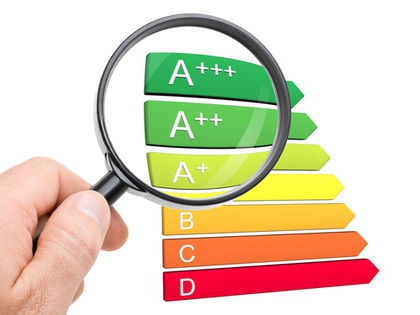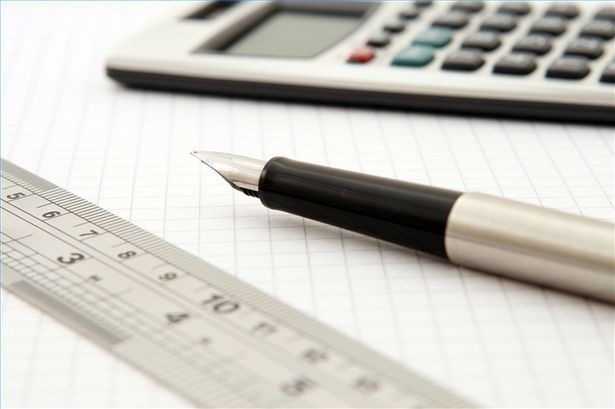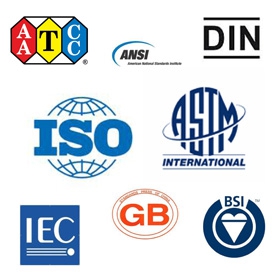The work of many enterprises is associated with the need to comply with standards. In the production of products, during the acceptance procedures, delivery to customers, implementation, relevant business processes are usually normalized through various documents. What is the specificity of standards as an independent source of norms? What categories are they represented in Russian practice? What distinguishes them from other sources of norms?
What is standardization?
Before exploring the categories of standards in force in the Russian Federation, it will be useful to consider an aspect that reflects the essence of the process during which the relevant norms are formed. It's about standardization. What it is?
According to a widespread definition, standardization should be understood as the activities of certain competent institutions within which rules are established, or characteristics in relation to any objects or processes with the aim of their subsequent repeated use. The main goal of the implementation of standards is to improve the quality of products (services rendered) at enterprises through streamlining the criteria for their production.

Standardization is an important condition for the successful development of any national economy. Strict standards issued by competent state authorities in relation to enterprises stimulate them to work more efficiently and produce safe and quality products.
Standardization is one of the significant factors of technological progress, both at the level of a single national economic system, and in the aspect of the development of the world community.
Therefore, some experts call international integration processes at the level of standards an important aspect of the technological movement of modern civilization forward.
Standardization tasks
Consider the key tasks of standardization. Experts identify the following list of them:
- establishing mutual understanding between the subjects of production processes (developers, industrialists, sellers, buyers of goods and services);
- the development of optimal standardization criteria that best reflect the particularities of the development of certain industries or the economy as a whole;
- assistance in the development by enterprises of optimal schemes of access to necessary resources through the introduction of standards that reflect the use of certain types of raw materials, materials, and components;
- unification of production processes in order to increase the dynamics of business scaling (as a result, a positive effect in terms of economic growth);
- establishing optimal standards in the field of metrology (with the goal of optimizing production chains both nationally and internationally);
- regulatory support of control procedures, tests, measurements, product research for quality;
- optimization of technological processes from the point of view of labor input, requirements for materials, electricity;
- Promoting the investment attractiveness of national enterprises in terms of improving production efficiency by optimizing standards.
In the process of standardization, as a rule, normative documents are developed that contain the very rules and characteristics of objects and processes in production (or in the provision of services). Among the most common varieties of this type of paper are the standards themselves.What are their key attributes? What separates standards from other sources of norms? Let's figure it out!

Standards, as a rule, are aimed at regulating any particular part of the production process (provision of services). They may also indicate criteria related, for example, to the terminology of any goods or services. These documents are developed on the basis of generalized scientific research, engineering, they accumulate the results of the practice of production (rendering of services) in various sectors of the economy.
Standards and specifications
Standards, according to a common point of view, should not be equated with a category such as technical conditions (or TU). The fact is that technical specifications are sources that are more correlated mainly with operational documentation. That is, they are accompanying documents. At the same time, technical specifications and various categories of standards have a comparable degree of demand. Both sources of norms are thus important in terms of organizing production processes. As a rule, the manufacturer, when releasing a particular product, must ensure that business processes comply not only with, for example, GOSTs, but also with specifications and other standards relevant to a particular industry or enterprise. Thus, it is legitimate to talk about the importance of an integrated approach in the practice of ensuring compliance of industrial schemes with one or another standard.

Features of the Russian standardization system
Some experts single out the system in question into a separate public institution. The fact is that, within its framework, the activity of the subjects of the publication of standards is regulated, as a rule, at the level of federal authorities having an appropriate level of competence. Actually, the goal of creating this system is largely reduced to solving political problems - protecting consumer rights, increasing the competitiveness of national industries, and developing international cooperation.
The main Russian source of law, which, in particular, includes the criteria according to which certain categories of standards are defined, is the Federal Law “On technical regulation. ” In accordance with this law, all standards used in Russian practice have a uniform designation format. What does it mean? In any category of RF standards, the structure of the relevant norms is presented in the form of an index, registration number, as well as the year of adoption. For example, GOST R 50597-93.
Classification of standards
There are a large number of criteria within which one can distinguish certain categories of standards. What is the traditional scheme for Russian practice? Experts and engineers working in the Russian Federation distinguish the following main categories of standards:
- international;
- state standards of the Russian Federation (GOST R);
- interstate (GOST);
- corporate (enterprise standards);
- industry;
- published by public associations.
There are other categories in world practice. For example, some experts highlight regional standards that are applicable simultaneously in several countries, which are united according to cultural or geographical characteristics. However, in Russia, the main categories of standards, one way or another, are presented in this list. Consider the features of some of them.

State standards (or GOSTs) of all types - Russian, or interstate - are characterized by the obligation in the aspect of application by enterprises and organizations whose activities fall under the provisions of the relevant norms. It can be noted that GOSTs in some cases can be one of the criteria for certification of an enterprise.
As for industry standards (or OSTs), these standards apply to a specific segment of the economy.It can be noted that they can also be used as criteria for certification.
Standards of enterprises (or STP) are also interesting. With their help, requirements are established with respect to methods (or processes) that are characteristic of particular production sites. In some cases, they may have similarities in certain provisions with GOSTs and OSTs, however, as a rule, they reflect particular features of production processes at specific enterprises.
It can be noted that, regardless of the specific category of standards, the designations of standards, if we talk about the Russian model, are built, as a rule, according to similar schemes. That is, if we talk about OST, then the name of the norm looks the same as in the case of GOST, that is, in the form of a sequential designation of the index, registration number and year of adoption. Of course, the standard does not contain such an element as “category number” in its name, however, it is clear from the abbreviation which type the standard belongs to — state, or, for example, industry.
Having considered what standards can be in terms of being assigned to one or another category, let us examine how the sources of law related to standardization are classified.
Classification of sources of norms in standardization
Now Russia has adopted a four-level scheme for organizing a national fund of sources of law in the field of standardization.
The first stage is the technical legislation. The main source of law here, as we noted above, is the Federal Law "On Technical Regulation". At this level, there are other laws and by-laws (resolutions of the Russian Government, orders of various departments, etc.).

Competent government agencies are involved in the regulation of a wide range of industries, forming various categories and types of standards.
At the second level are, in fact, the very documents that contain the rules governing production facilities and processes. These are national and interstate standards, various classifiers, recommendations.
At the third level are sources containing industry standards and those created by scientific and technical societies.
On the fourth - sources, including enterprise standards, as well as complementing and accompanying standards.
Thus, we have defined a “rating” in relation to the above categories of standards, which is based on the fact that relevant sources of law belong to one level or another.
The general characteristic of standards of different categories, which is noted by many experts, is the predominant imperativeness of norms. Of course, at the level to which this or that norm corresponds. Dispositiveness may also be present in certain paragraphs of standards, however, as a whole, experts prescribe imperative provisions prevail in them.
Types of standards
How do the categories and types of standards relate? What is common between these two terms and what distinguishes them? Everything is very simple. Above, we examined the characteristics of standards of various categories depending on the level of a document. That is, the main criterion in relation to the term “category” is the level. In turn, what are the key features of such a phenomenon as the “appearance” of the standard?

The main factor in classifying a norm as a particular species (while it is observed not only in Russia, but also in world practice) is the presence of some specifics of the standardization object. Experts identify several main classes within which it can be defined. So, depending on the specifics of the standardization object, standards can be:
- fundamental;
- oriented to products (services);
- work oriented (processes);
- adapted for control methods (in relation to tests, measurements or, for example, analysis).
As for the fundamental standards, it can be noted that they govern, first of all, key organizational aspects, provisions and norms that can be common in relation to different segments of production, areas of science and technology. If we talk about, say, standards focused on products or services, then these documents establish the criteria for specific types of activities in production (or in services): production, operation, transportation, repair, etc.
What should you pay special attention to when studying standards? The concept of “categories and types” should be used carefully in the context of both criteria. In this connection? The fact is that this or that "category" does not correlate with any specific "type" of the standard. That is, the belonging of a particular source of norms to a specific group does not predetermine its attribution to a certain type. Thus, within the framework of GOSTs, standards of any kind may be present. In turn, regulatory documents, standardization object which is the issue, can belong to both state sources and industry, corporate or international.
Standardization as a political factor
What are the categories of standards and their characteristics, we have studied. Let us now consider an aspect that reflects the practical significance of the norms in question in relation to the development of the national economy. At the beginning of the article, we noted that the implementation of GOSTs and other standards is largely due to political reasons, and therefore it is useful to study this aspect. Among the subjects of discussion popular in the scientific community is the question of which norms and standards should be fundamental for national Russian enterprises: domestic or international?
Opinions of experts on this subject vary significantly. There are experts who are confident that the state economy should develop as independently as possible, especially in strategic sectors. And therefore, the foundations of standardization in this case should be national. Other experts believe that in the modern world it is problematic to develop the economy in complete isolation, and therefore consider it appropriate to bring national standards closer to world standards.
International standardization
How are the categories of standards defined in metrology and other industries (if we talk about the international level of formation of relevant standards)? Consider the key structures that are involved in this process.

First of all, it is the International Organization for Standardization, or ISO, which was formed in 1947. Most of the modern states participate in its activities. Another critical structure is the IEC, or the International Commission on Electrical Engineering. It can be noted that it was founded earlier than ISO, in 1906. True, the number of IEC participants is less - 76 countries. Other major international organizations involved in the processes related, in one way or another, with standardization are the UNECE, as well as the International Chamber of Commerce (or ICC).
Regional standardization
We noted above that some experts identify regional standards as a separate category. International structures are also responsible for their formation. For example, their own regional organizations responsible for standardization are formed by the countries of Scandinavia, the EU, Africa, Latin America, and the Arab region. Among the significant European structures is the Committee for Standardization (CEN). EU countries, as some experts note, have achieved an exceptionally high level of integration of various production standards, regulations and norms.








